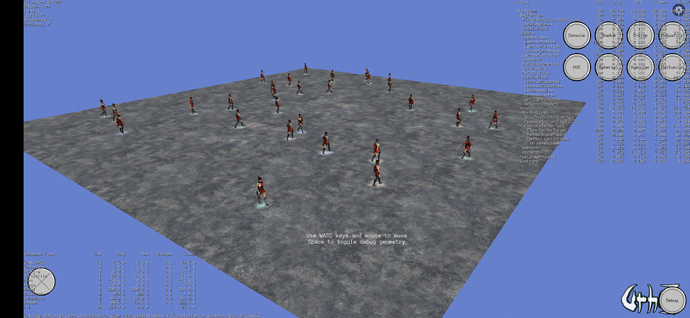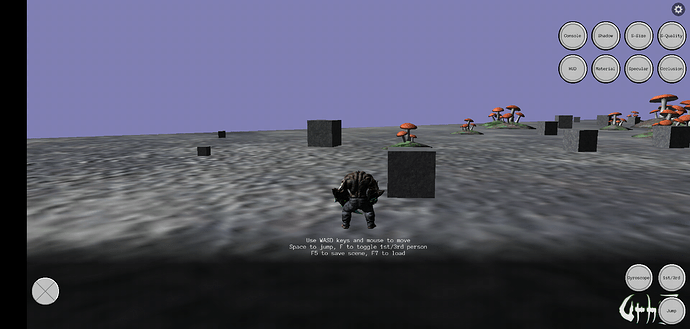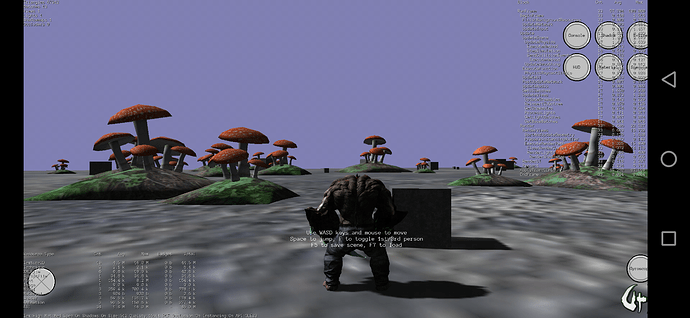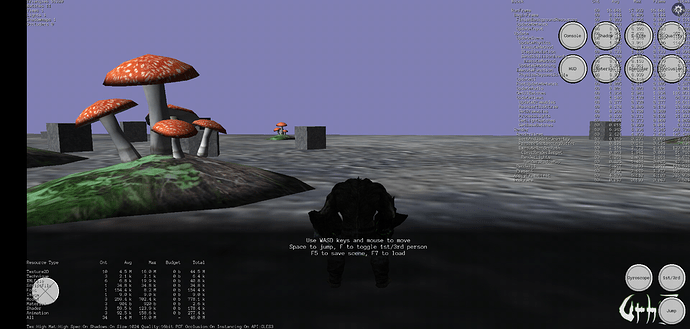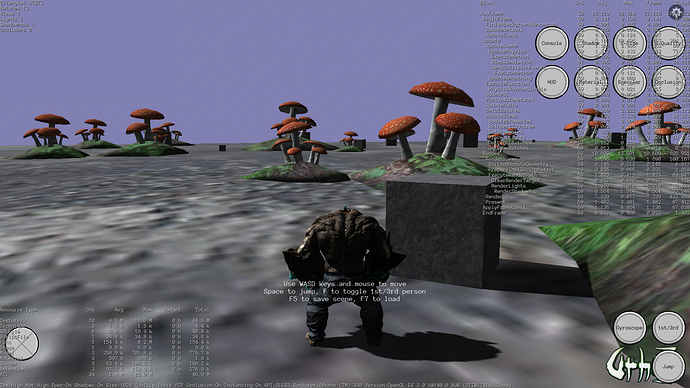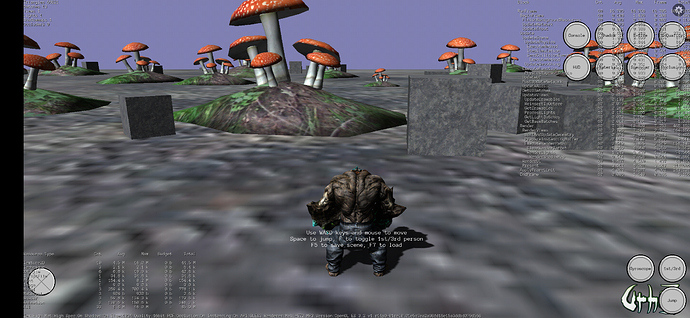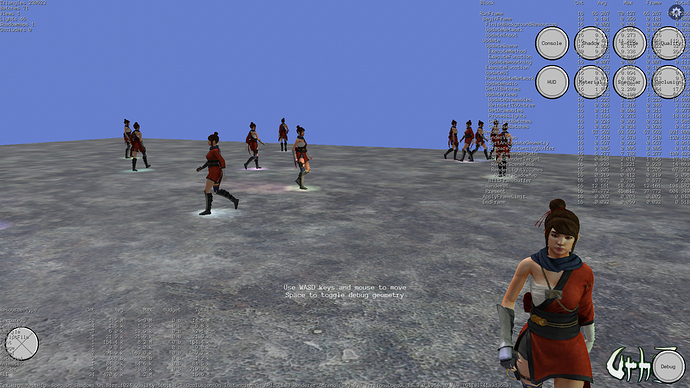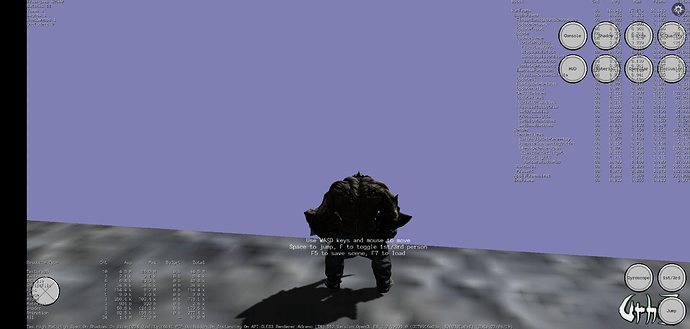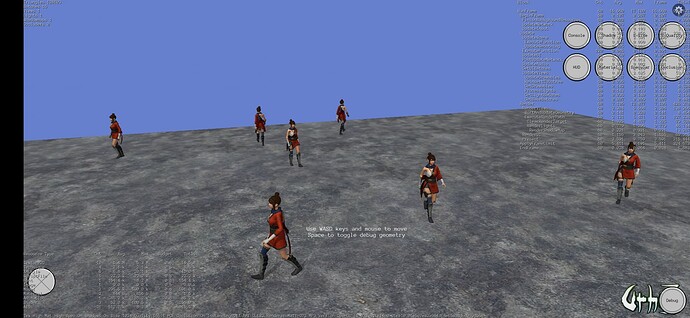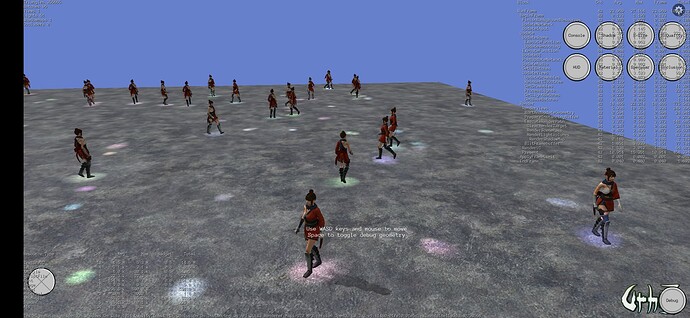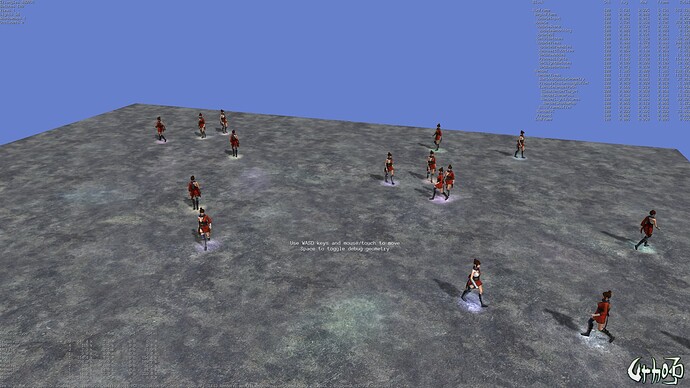Hi!
I m add support for GLES3 rendering API and it features:
- Instancing
- Uniform buffer object
- Multiple render targets
- Texture2DArray
- Texture3D
- Support for textures: ETC2, sRGB, floating point, depth, 1 & 2 channel (R & R/G).
Worked render pathes - Deferred, DeferredHWDepth, Prepass, PrepassHWDepth.
Sources - https://github.com/orefkov/Urho3D/tree/GLES3_Support
For build set option URHO3D_GLES3=1
For CMake need -DURHO3D_GLES3=1, for Gradle /PURHO3D_GLES3=1.
Builded for Android (arm64, armv7a) - https://yadi.sk/d/PYWhzveBu58epg
Please test on some devices.
In the builded version, there are no Lua and Lua scripts, and in the example 06_SkeletalAnimation.as added 70 point lights and deferred render path used. Here is a screenshot from the phone - CPU MTK Helio P60, GPU - Mali G72 MP3.
After test I will PR it at main repo.

